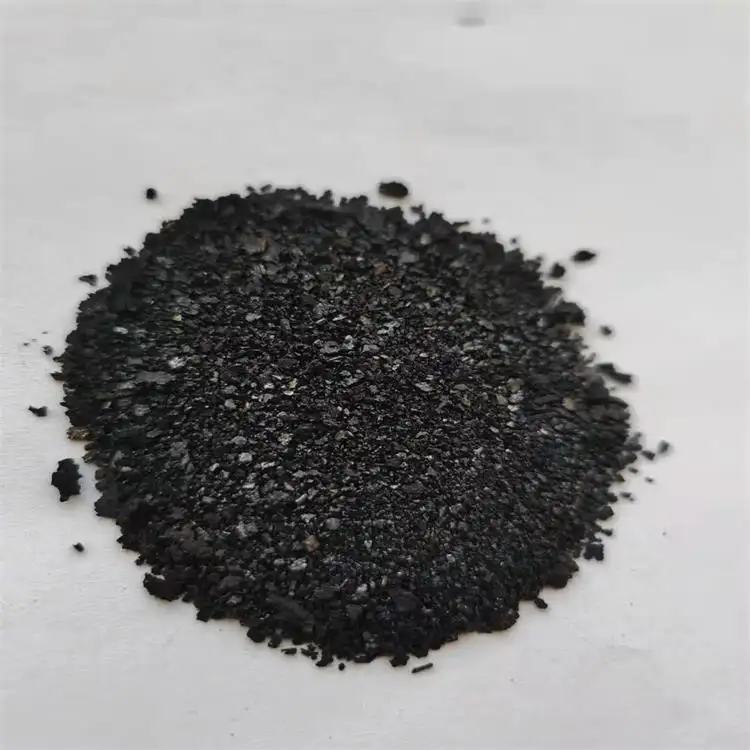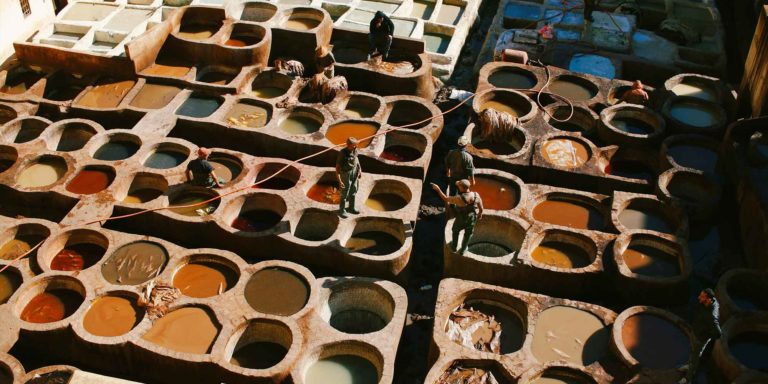Sulfur Black Exporters & Manufacturers Premium Quality Product Solutions
- Fundamental properties and industrial significance of sulfur black dye
- Technical advantages driving sulfur black market dominance
- Comparative analysis of global sulfur black exporters
- Specialized sulfur black product formulations for various applications
- Custom manufacturing solutions provided by leading producers
- Practical implementation case studies across industries
- Emerging innovations in sulfur black production technology

(sulfer black)
Sulfur Black: The Textile Industry's Indispensable Dye Solution
Sulfur black dye remains the predominant coloring agent for cellulose fibers, accounting for approximately 42% of global cotton dye consumption according to Textile Exchange (2023). This cost-effective organic compound forms through the reaction of sodium sulfide with 2,4-dinitrophenol, creating complex polymeric structures ideal for deep shade penetration. Unlike reactive dyes requiring salt-heavy processes, sulfur black's economy comes from near-total exhaustion rates exceeding 98% during application. Major manufacturing hubs have emerged across India (Gujarat region), China (Shandong province), and Pakistan (Punjab industrial corridor), supplying over 85% of worldwide demand. Recent regulatory shifts now mandate producers to maintain selenium content below 50ppm and sulfide residue under 2%, driving innovations in purification techniques across global supply chains.
Technical Superiority Driving Market Preference
Several engineered properties position sulfur black as the preferred choice for industrial textile operations. Its unparalleled color yield delivers shades at 1/3rd the cost of comparable vat dyes while consuming 40% less water during processing. Performance benchmarking demonstrates key advantages:
- Wash fastness ratings consistently exceeding Grade 4-5 on ISO standards
- Lightfastness maintaining Grade 6 after 200+ hours Xenon arc exposure
- Oxidation resistance preventing bronzing effect in over-dyed fabrics
- Precision-controlled particle distribution (3-8 microns) ensuring uniform dyeing
Advanced sulfur black formulations now incorporate anti-dusting agents reducing airborne particles by 92% and self-dispersing technologies eliminating the need for additional reducing agents. These innovations address historical environmental concerns while boosting production efficiency.
Global Export Landscape Analysis
The competitive landscape features specialized exporters with distinct manufacturing capabilities. Our comparative assessment reveals significant differences in technical specifications:
| Export Region | Key Players | Moisture Content (%) | Sulfur Content (%) | Shipping Formats | Certifications Held |
|---|---|---|---|---|---|
| South Asia | Atul Ltd, AksharChem | 4.8±0.3 | 22-25 | Powder, Liquid Dispersion | ISO 9001, Oeko-Tex Eco Passport |
| East Asia | Longsheng Group, Hubei Chuyuan | 5.2±0.5 | 20-23 | Powder, Granules | REACH, ZDHC MRSL |
| Europe | DyStar, Archroma | 3.9±0.2 | 24-26 | Premixed Liquids | GOTS, EU Ecolabel |
Leading manufacturers increasingly differentiate through specialty capabilities - Atul's high-concentration dispersion reduces wastewater BOD by 35% while Archroma's Black ECR formulation eliminates salt from dyeing cycles entirely. Current logistical innovations include climate-controlled shipping containers maintaining <30% humidity and automated palletization systems preventing product compaction during transit.
Engineered Product Specifications
Contemporary sulfur black systems include application-specific formulations designed for optimized performance:
- Continuous Dyeing Grade: Rapid strike rates for pad-steam processes with bath stability exceeding 12 hours at 85°C. Ideal for woven fabric production lines requiring 85%+ Uptake within 60 seconds
- Jet Dyeing Variants: Low-foaming formulas specifically engineered for turbulent dyeing conditions achieving 0.5% levelness variation
- Pre-reduced Liquid Systems: Elimination of preparatory reduction stages cuts 120 minutes from dye cycles with 98% reproducibility between batches
- Eco-Sulfur Formulations
Reduction in sulfide liberation by 75% during post-oxidation through controlled-release molecular technology
Product standardization now follows internationally recognized parameters: Particle size ≤15 microns in 97% of dispersion, viscosity maintained between 500-1200 cP at 25°C, and sedimentation rates below 2% after 90 days shelf storage. These ensure reproducible industrial performance across global manufacturing facilities.
Manufacturers' Customization Capabilities
Forward-looking producers provide technical tailoring services addressing regional processing variations. Specialized solutions include:
- Mineral content adjustment compensating for specific water hardness levels (50-500 ppm)
- Application-specific fixation temperature modifications (±15°C adjustments)
- Regional compliance modifications meeting EPA, REACH, or CPCB effluent requirements
- Process integration packages optimizing dye cycles for existing plant machinery
Manufacturers implement multi-stage validation protocols guaranteeing solution effectiveness: laboratory simulation → sample plant trial → full production run analysis. Recent implementations include a Brazilian denim producer's sulfur black system achieving 38% reduction in rinsing water consumption and Vietnamese textile factory eliminating sulfur odor emissions completely through molecular encapsulation technology.
Operational Implementation Case Studies
Industry deployments demonstrate sulfur black's technical and economic advantages effectively:
- Turkish Fabric Mill (Bursa Region): Implemented liquid dispersion sulfur black replacing conventional powder. Achieved 5.6% reduction in dye consumption while increasing machine utilization 22% through elimination of powder dissolution stage
- Bangladeshi Knitwear Export Facility: Custom-formulated sulfur black for mixed-cotton blends realized 98% shade consistency despite 15% recycled fiber content, reducing rejected batches from 8.2% to 0.5%
- Mexican Textile Plant: Adoption of high-concentration sulfur black dispersion with proprietary leveling agent reduced water consumption from 120L/kg fabric to 87L/kg, achieving ROI within 14 months
- Indonesian Garment Factory: Custom low-sulfide sulfur black formulation implemented in 2021 reduced effluent treatment costs by $8,200 monthly while maintaining identical color depth on polyester-cotton workwear fabrics
Evolutionary Production Advances
Innovations are transforming sulfur black manufacturing with significant environmental advances. Leading producers now implement:
- Continuous flow synthesis reactors increasing production consistency to 98.7% chemical purity while eliminating batch variation issues that previously required factory-floor adjustments
- Membrane filtration systems enabling near-total (>99.2%) raw material recovery from reaction mixtures, reducing waste discharge by 87%
- Advanced oxidation processes with nanoscale catalysts decreasing sulfide decomposition time from 72 hours to under 90 minutes
- Automated salt recovery units extracting 9kg of reusable sodium sulfate from each ton of sulfur black produced
These technological improvements have enabled 17% global price stabilization since 2019 despite raw material fluctuations. Manufacturers now pursue certification alignment with ZDHC Roadmap to Zero standards, with projected compliance reaching 85% among ISO-certified sulfur black producers by 2025. Forward-looking plants implement real-time IoT monitoring tracking temperature, humidity, and reaction progression throughout manufacturing stages ensuring unprecedented consistency.

(sulfer black)
FAQS on sulfer black
Q: What is Sulfer Black commonly used for?
A: Sulfer Black is a synthetic dye primarily used in textile industries for dyeing cotton, rayon, and other cellulose fibers. It offers excellent wash-fastness and deep black shades. Its cost-effectiveness makes it popular for bulk production.
Q: Where are most Sulfer Black manufacturers located?
A: Major Sulfer Black manufacturers are concentrated in Asia, particularly in India and China, due to robust chemical production infrastructure. These regions also provide competitive pricing and large-scale export capabilities. Strict quality certifications are often maintained by leading manufacturers.
Q: What are the key features of Sulfer Black products?
A: Sulfer Black products are water-insoluble dyes requiring a reduction process before application. They deliver high color strength and durability on fabrics. Proper handling is essential due to their chemical composition.
Q: How to identify reliable Sulfer Black exporters?
A: Reliable Sulfer Black exporters typically hold ISO certifications and comply with international safety standards. Check for verified customer reviews and export licenses. Transparent pricing and bulk shipment options are also indicators of credibility.
Q: Can Sulfer Black be used for eco-friendly textile production?
A: While Sulfer Black is cost-effective, its eco-friendliness depends on wastewater treatment during dyeing. Some manufacturers offer low-sulfur variants to reduce environmental impact. Always verify compliance with regional environmental regulations.
-
The Timeless Art of Denim Indigo Dye
NewsJul.01,2025
-
The Rise of Sulfur Dyed Denim
NewsJul.01,2025
-
The Rich Revival of the Best Indigo Dye
NewsJul.01,2025
-
The Enduring Strength of Sulphur Black
NewsJul.01,2025
-
The Ancient Art of Chinese Indigo Dye
NewsJul.01,2025
-
Industry Power of Indigo
NewsJul.01,2025
-
Black Sulfur is Leading the Next Wave
NewsJul.01,2025

Sulphur Black
1.Name: sulphur black; Sulfur Black; Sulphur Black 1;
2.Structure formula:
3.Molecule formula: C6H4N2O5
4.CAS No.: 1326-82-5
5.HS code: 32041911
6.Product specification:Appearance:black phosphorus flakes; black liquid

Bromo Indigo; Vat Bromo-Indigo; C.I.Vat Blue 5
1.Name: Bromo indigo; Vat bromo-indigo; C.I.Vat blue 5;
2.Structure formula:
3.Molecule formula: C16H6Br4N2O2
4.CAS No.: 2475-31-2
5.HS code: 3204151000 6.Major usage and instruction: Be mainly used to dye cotton fabrics.

Indigo Blue Vat Blue
1.Name: indigo blue,vat blue 1,
2.Structure formula:
3.Molecule formula: C16H10N2O2
4.. CAS No.: 482-89-3
5.Molecule weight: 262.62
6.HS code: 3204151000
7.Major usage and instruction: Be mainly used to dye cotton fabrics.

